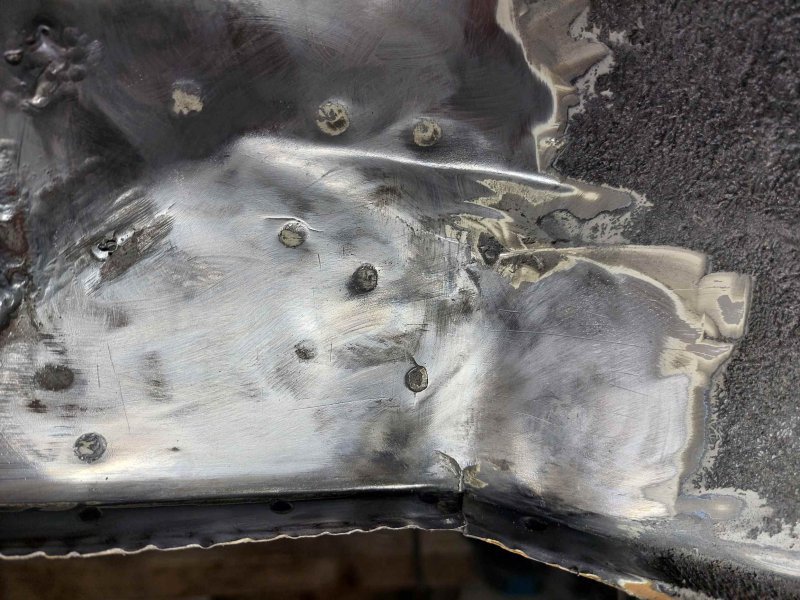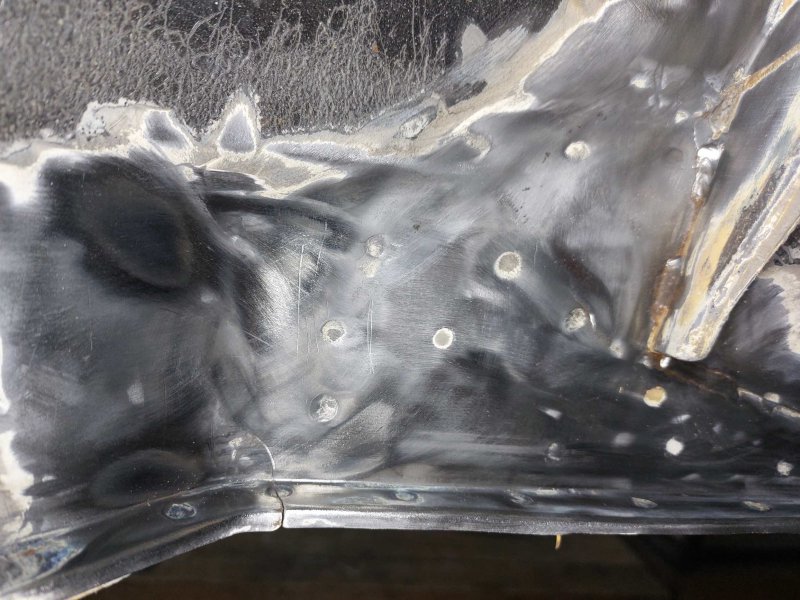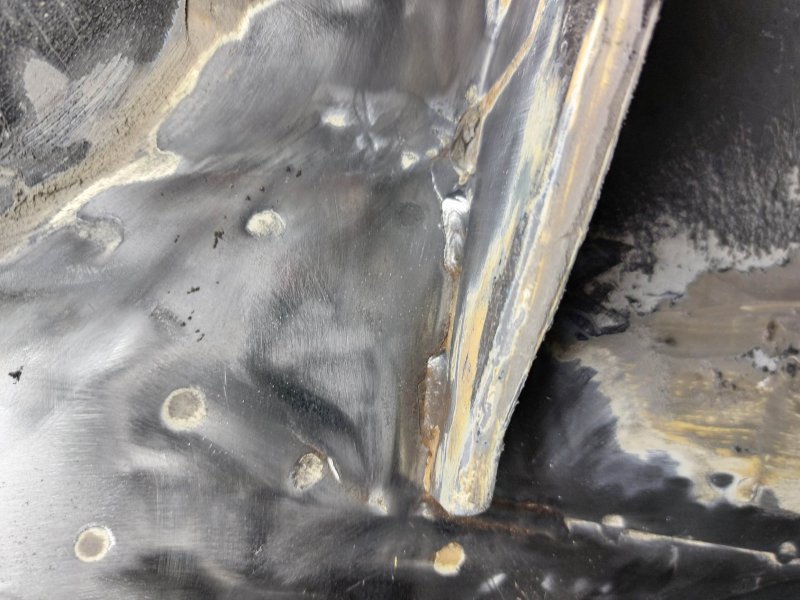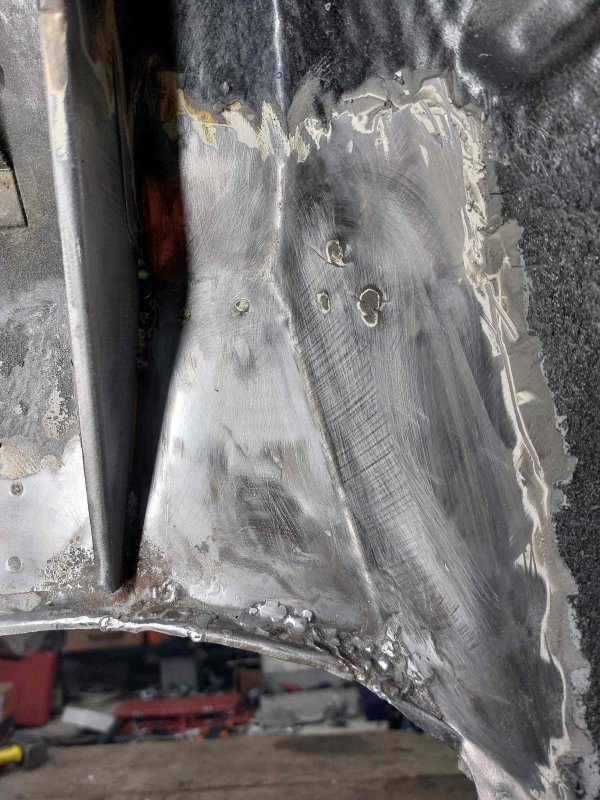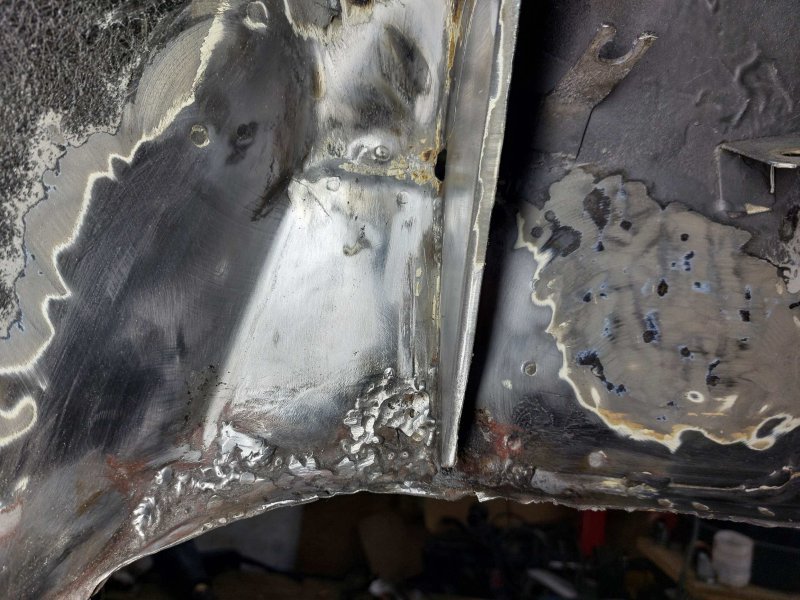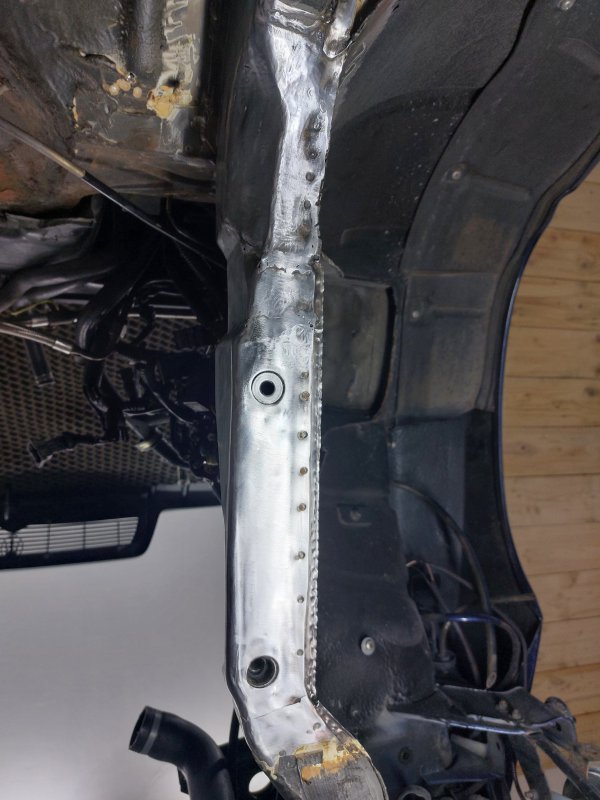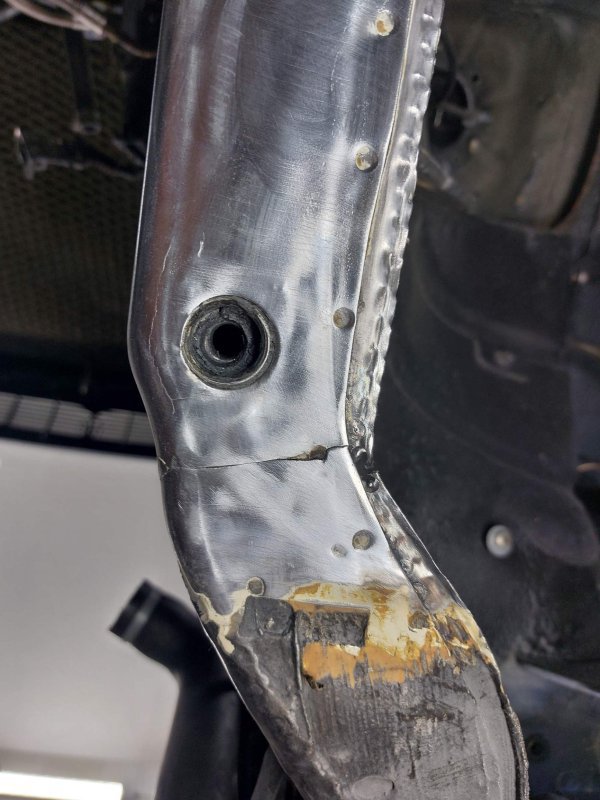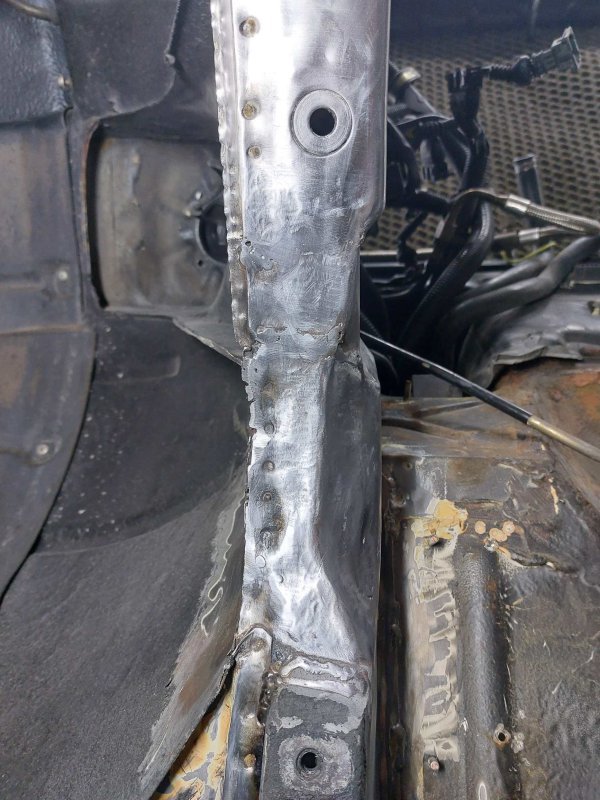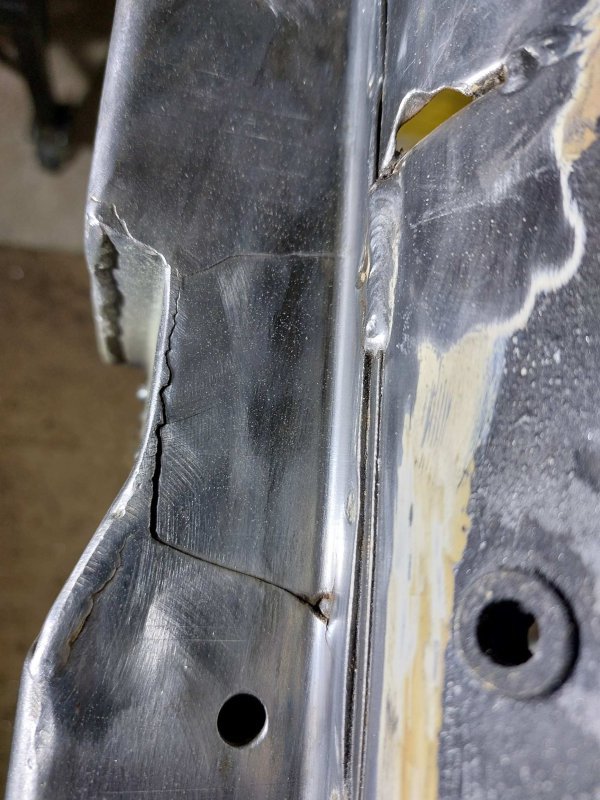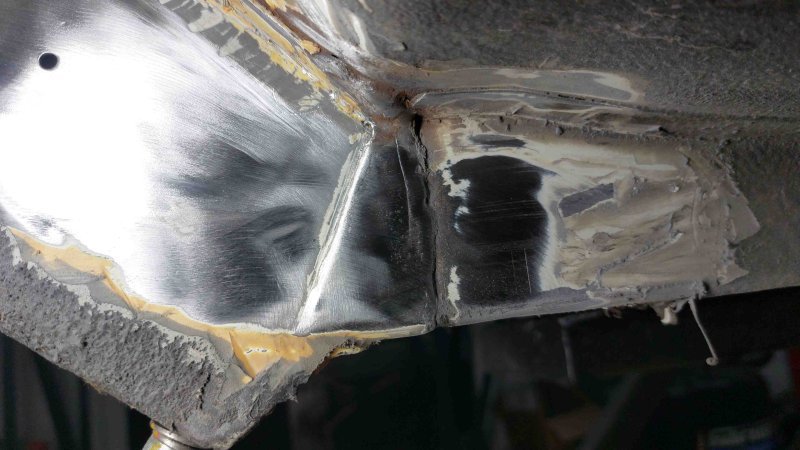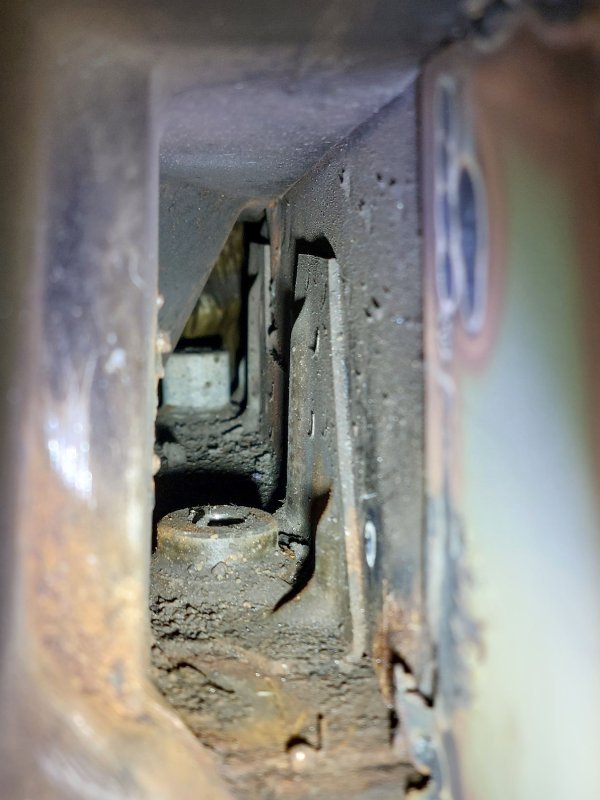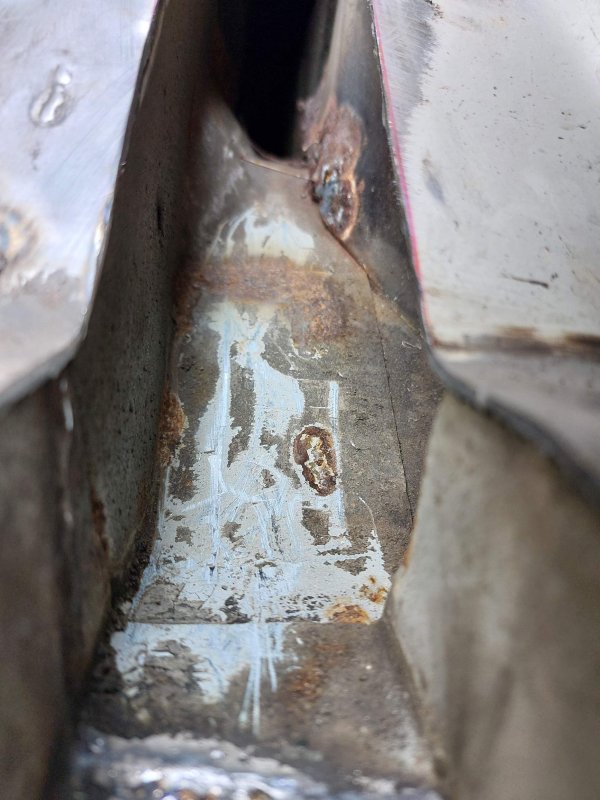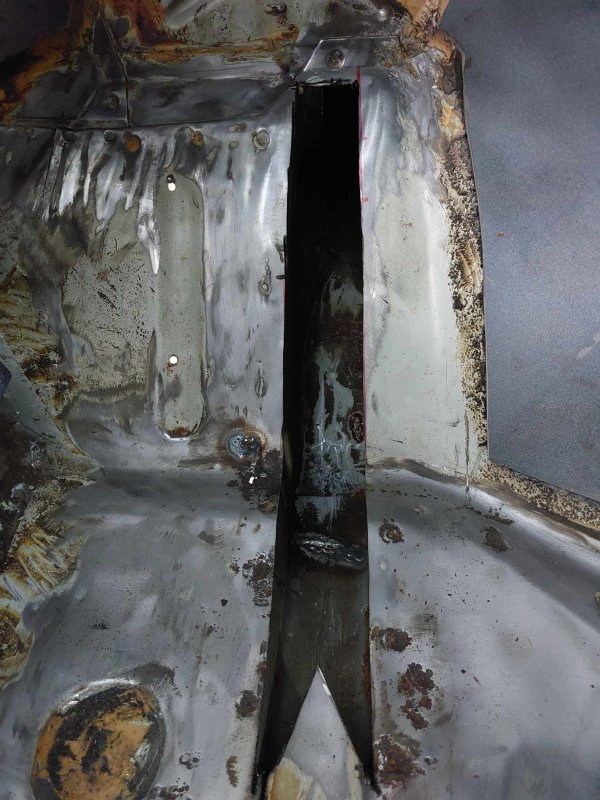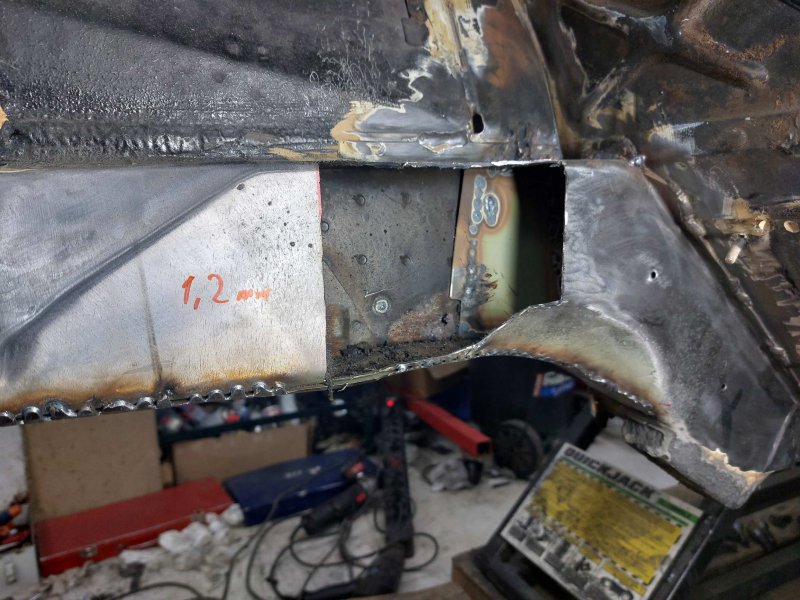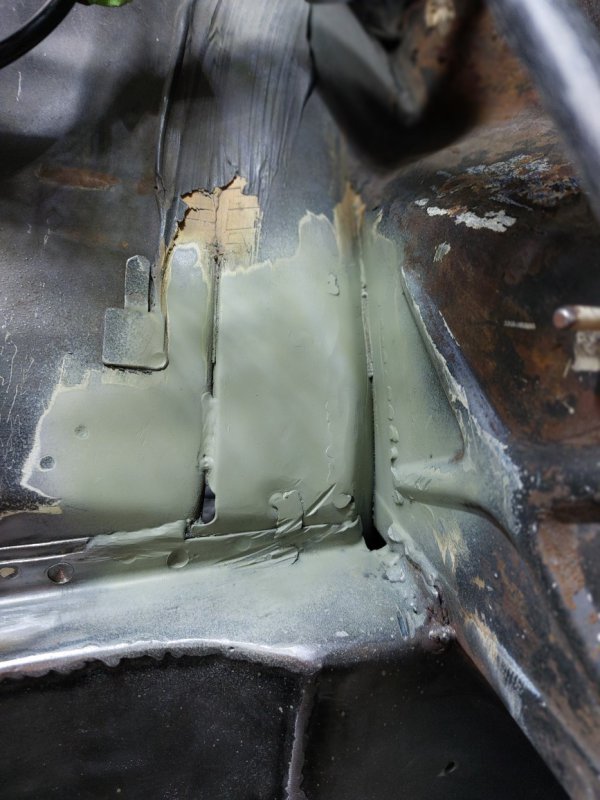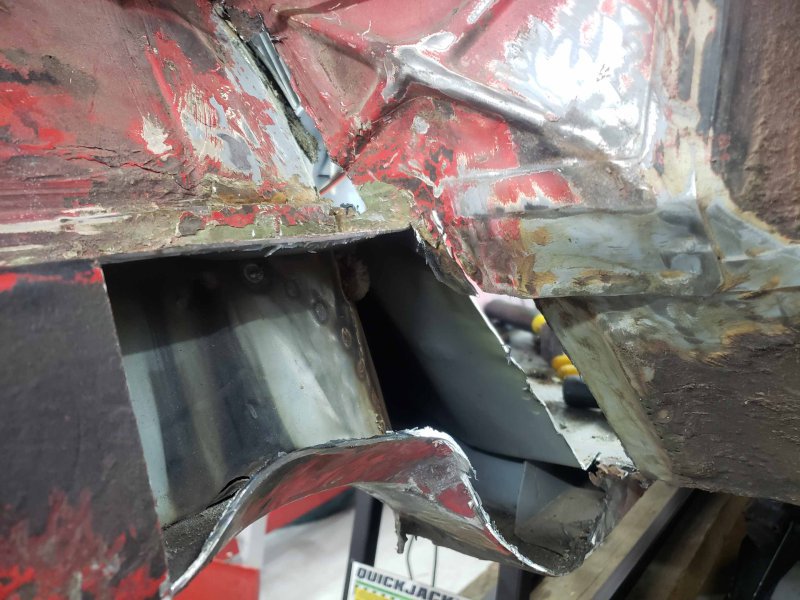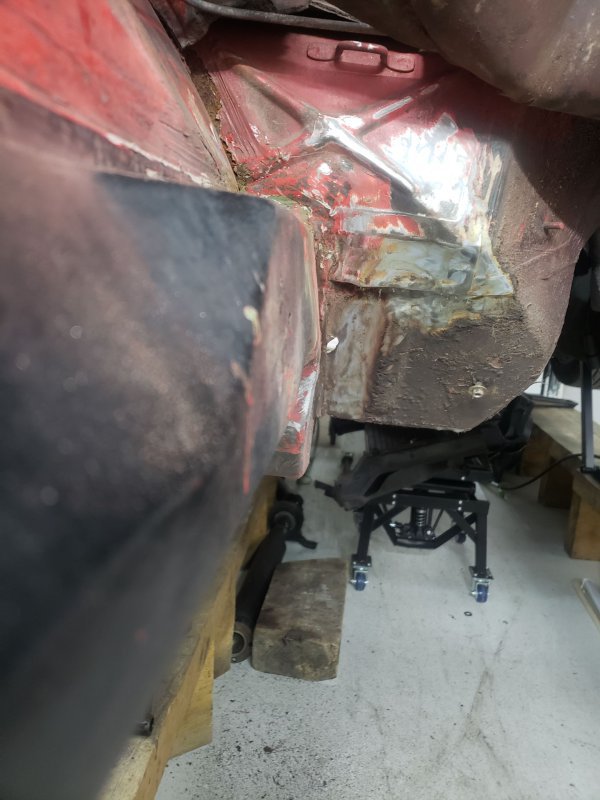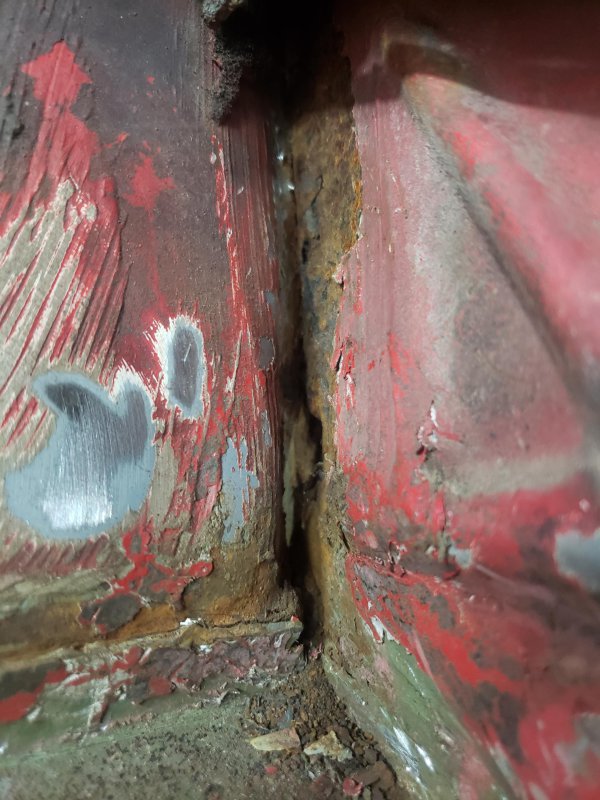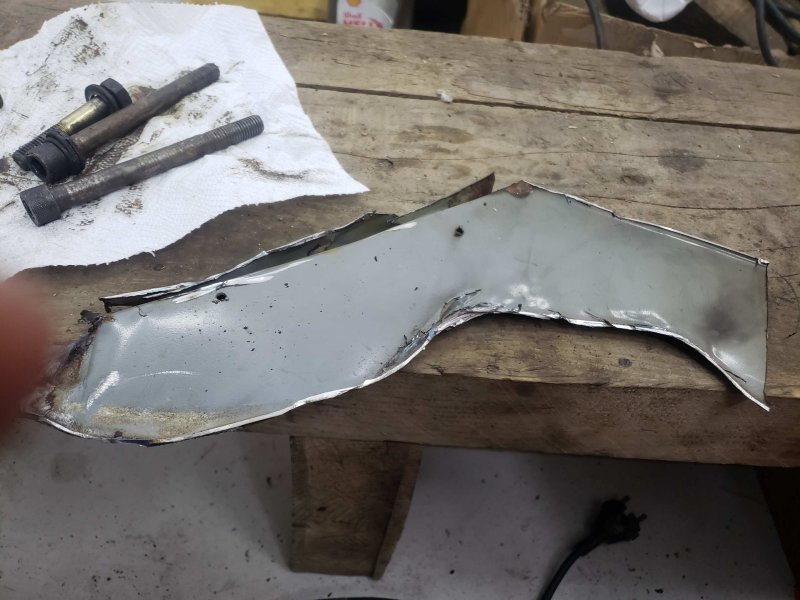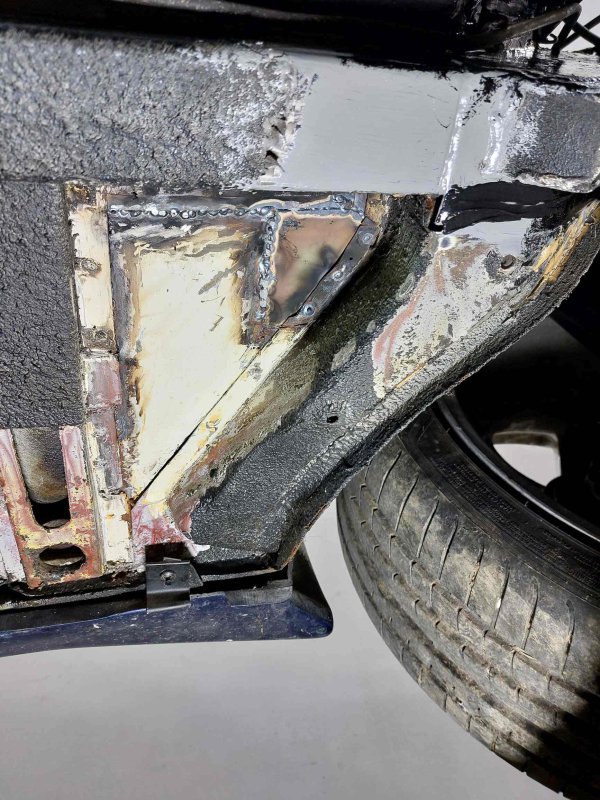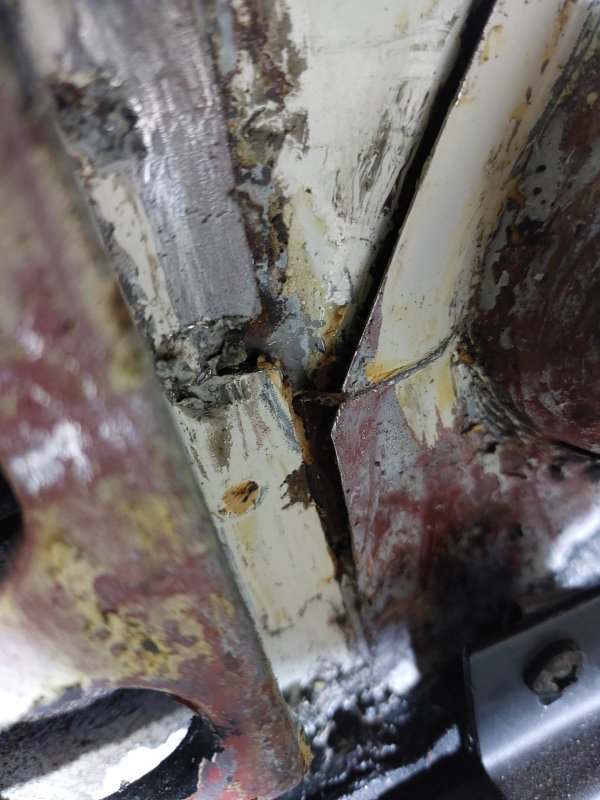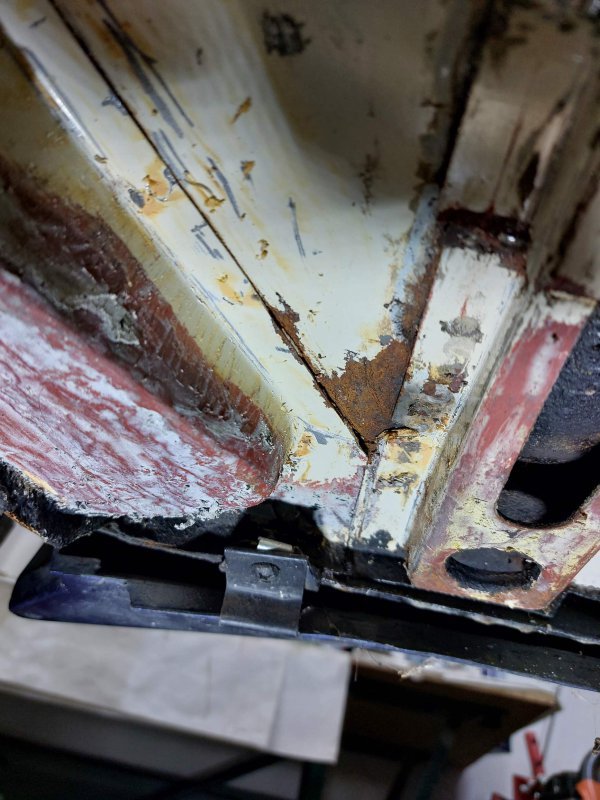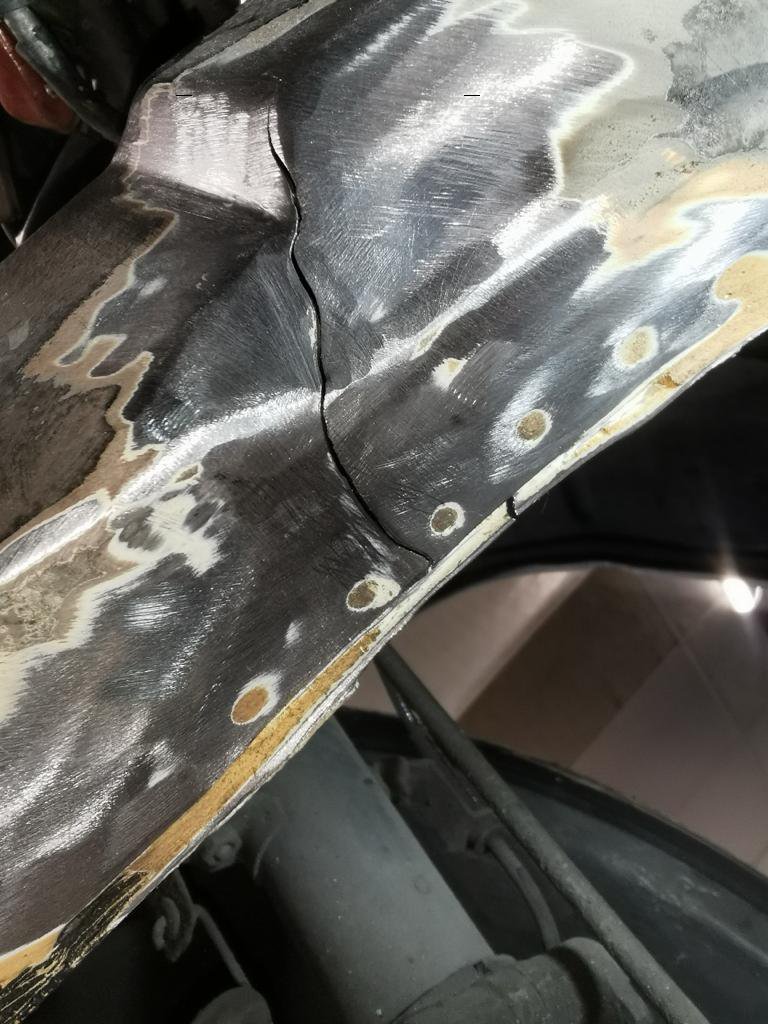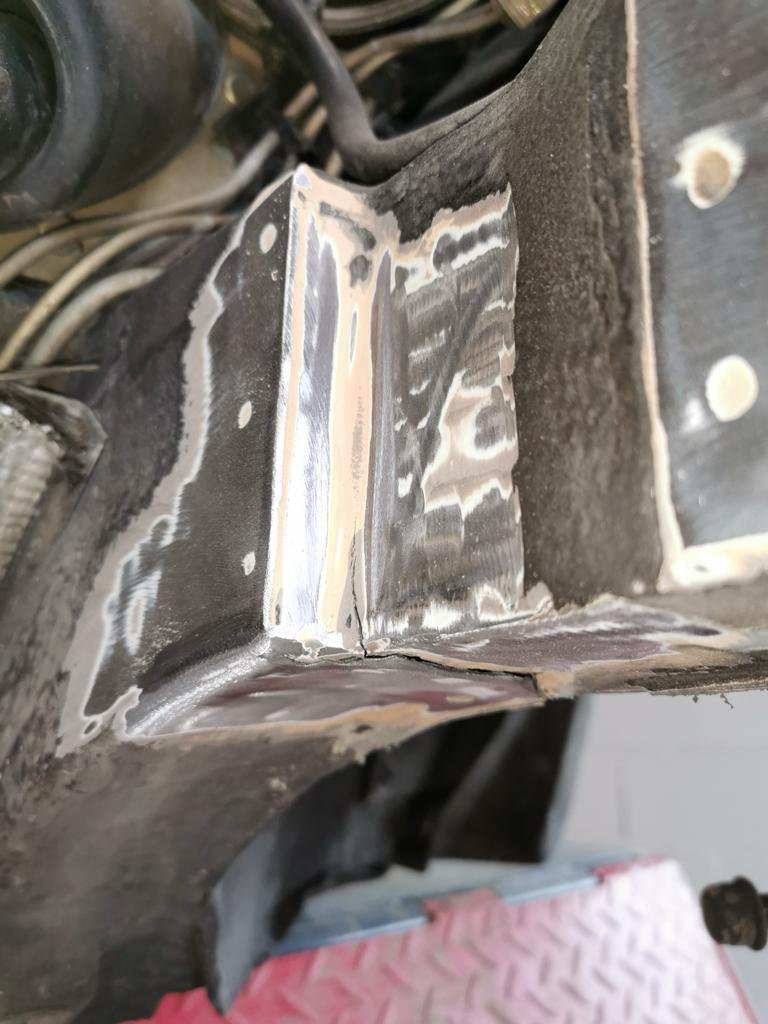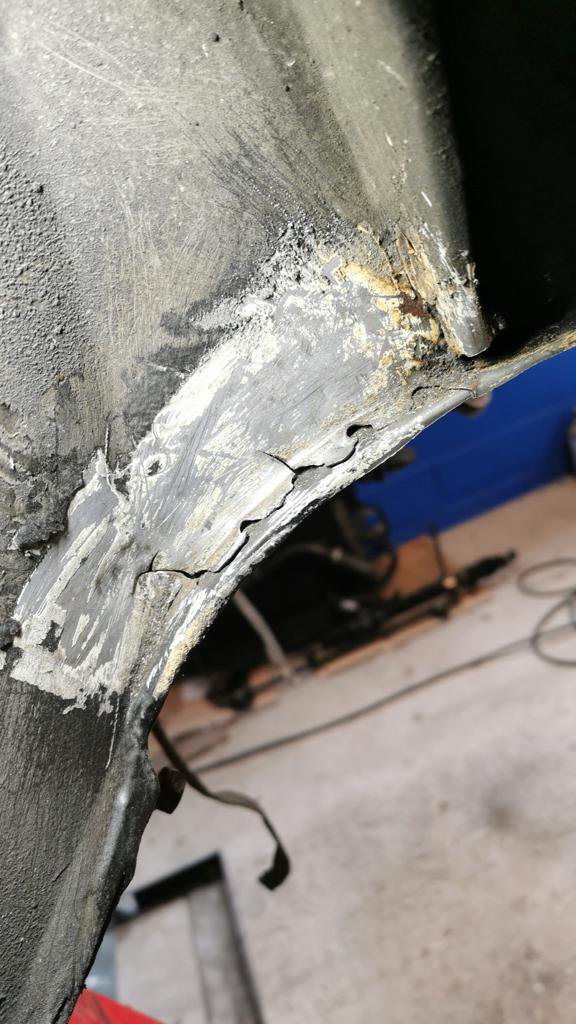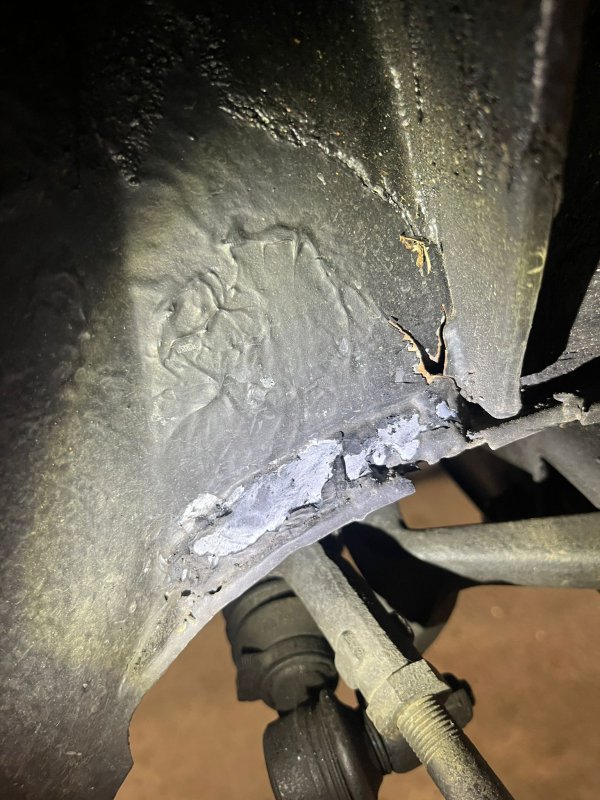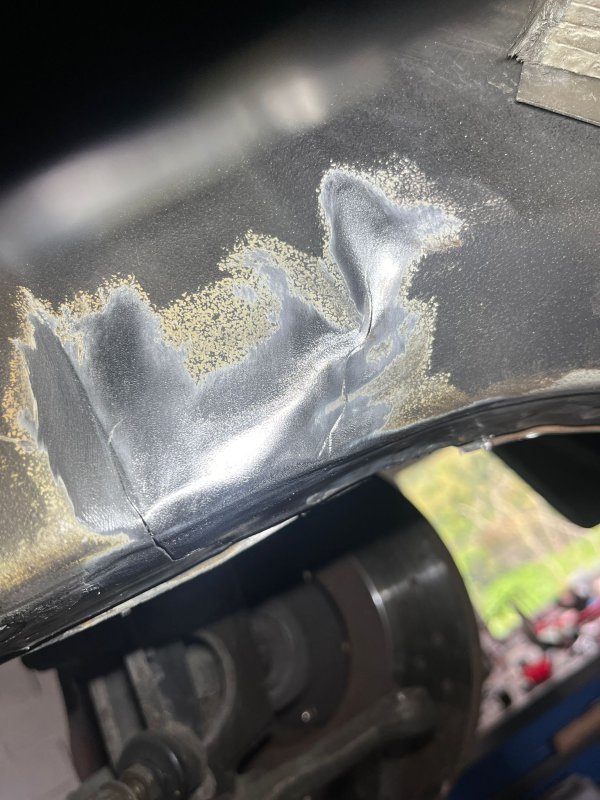Hi,
I'd like to tell what I know about the fundamental design problems of the front part of all biturbo cars, from carbs up to qp4.
To briefly remind history (I don't pretend to know all the details): the biturbo body remained basically the same from carbs to qp4. First cars had the 4 bolts suspension and a 150hp engine, then came the 5 bolts with a much more performant steering on the same engine frame and engines of more than 250hp, then ghibli with wider track width and 300hp, then the tubular rear suspension and then the ZF diff frame.
But the body floors and frames remained the same in all these cars: same metal sheets made of the same chewing-gum black steel. Same weld points. Same design mistakes.
Worse, during the body assembly the ghibli front frames (made of the same carb mould) were cut to give more space to the engine.
Qp4 had a slightly redesigned body with some reenforced points and was likely made of a modern automotive steel. It's a guess about the steel people do because qp4 bodies are much harder to cut. Again, all design mistakes remained present.
So Ghibli had a more performant suspension, twice more power, better brakes, bigger wheels and weighed 150kg more than carb versions, but were still using the same body.
The body has huge design flows in the body frames that hold the engine frame. The structure is weak and is made of 0.9mm and few 1.2mm sheets. Not to mention 2 and even 3 layers of sheets above the engine frame that often rust in between and break.
The consequence is that when these cars are driven hard the front of the body breaks in many places. People continue driving these cars in this condition. A friend runs a Maserati workshop and he often repairs craked ghibli and qp4 bodies.
I've been studying these problems for years on my cars. The last time I had a "chance" to buy a '97 GT that likely made track days on slicks. The front is completely destroyed, although the car looks great. The body was repaired at least once but broke again few cm farther. The car was painted and everything was hidden under a thick layer of putty and painting.
So my car is a kind of study of the design mistakes because it broke in tens of points. Here are pictures. I'm not going to explain every picture, but I can add comments later, if needed.
Some pictures show past repairs with ugly and not that ugly welds.
One pictures shows the floor that was smashed in an attempt to straighten it. The engine frame was pushed inside the car because the structure is so weak.
I'd like to tell what I know about the fundamental design problems of the front part of all biturbo cars, from carbs up to qp4.
To briefly remind history (I don't pretend to know all the details): the biturbo body remained basically the same from carbs to qp4. First cars had the 4 bolts suspension and a 150hp engine, then came the 5 bolts with a much more performant steering on the same engine frame and engines of more than 250hp, then ghibli with wider track width and 300hp, then the tubular rear suspension and then the ZF diff frame.
But the body floors and frames remained the same in all these cars: same metal sheets made of the same chewing-gum black steel. Same weld points. Same design mistakes.
Worse, during the body assembly the ghibli front frames (made of the same carb mould) were cut to give more space to the engine.
Qp4 had a slightly redesigned body with some reenforced points and was likely made of a modern automotive steel. It's a guess about the steel people do because qp4 bodies are much harder to cut. Again, all design mistakes remained present.
So Ghibli had a more performant suspension, twice more power, better brakes, bigger wheels and weighed 150kg more than carb versions, but were still using the same body.
The body has huge design flows in the body frames that hold the engine frame. The structure is weak and is made of 0.9mm and few 1.2mm sheets. Not to mention 2 and even 3 layers of sheets above the engine frame that often rust in between and break.
The consequence is that when these cars are driven hard the front of the body breaks in many places. People continue driving these cars in this condition. A friend runs a Maserati workshop and he often repairs craked ghibli and qp4 bodies.
I've been studying these problems for years on my cars. The last time I had a "chance" to buy a '97 GT that likely made track days on slicks. The front is completely destroyed, although the car looks great. The body was repaired at least once but broke again few cm farther. The car was painted and everything was hidden under a thick layer of putty and painting.
So my car is a kind of study of the design mistakes because it broke in tens of points. Here are pictures. I'm not going to explain every picture, but I can add comments later, if needed.
Some pictures show past repairs with ugly and not that ugly welds.
One pictures shows the floor that was smashed in an attempt to straighten it. The engine frame was pushed inside the car because the structure is so weak.
Attachments
-
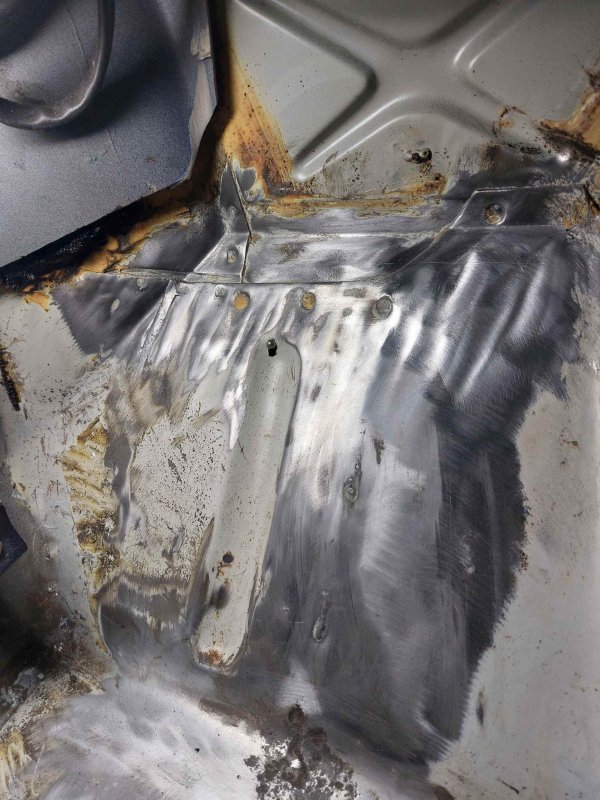 20240122_141601_compress20.jpg109.5 KB · Views: 32
20240122_141601_compress20.jpg109.5 KB · Views: 32 -
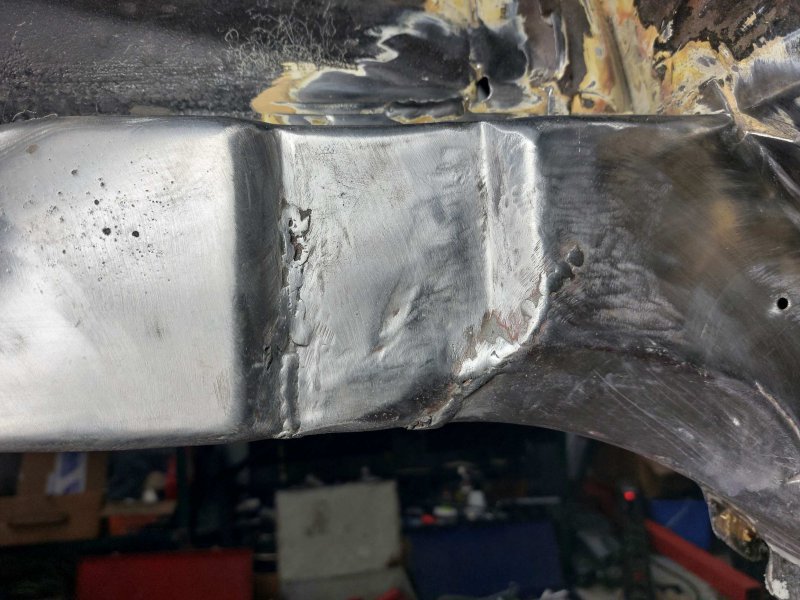 20240123_175603_compress80.jpg93.8 KB · Views: 28
20240123_175603_compress80.jpg93.8 KB · Views: 28 -
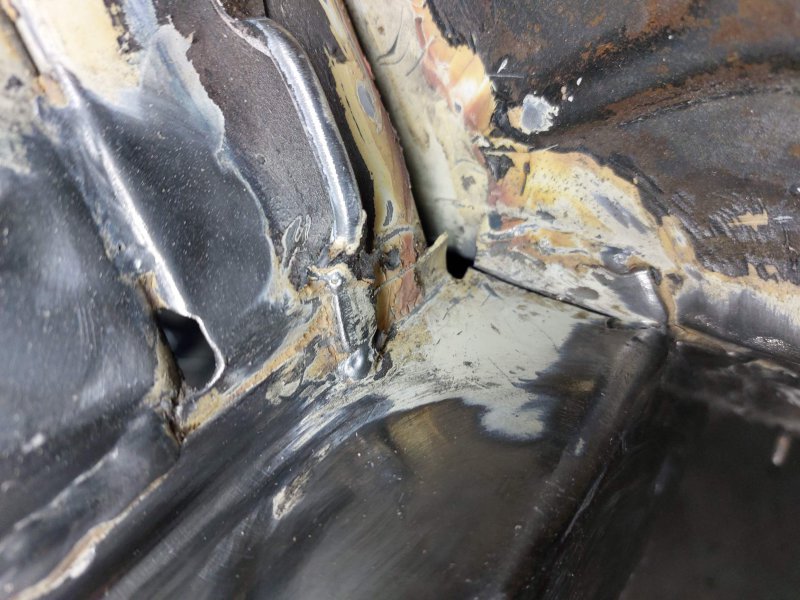 20240123_175608_compress85.jpg99.8 KB · Views: 26
20240123_175608_compress85.jpg99.8 KB · Views: 26 -
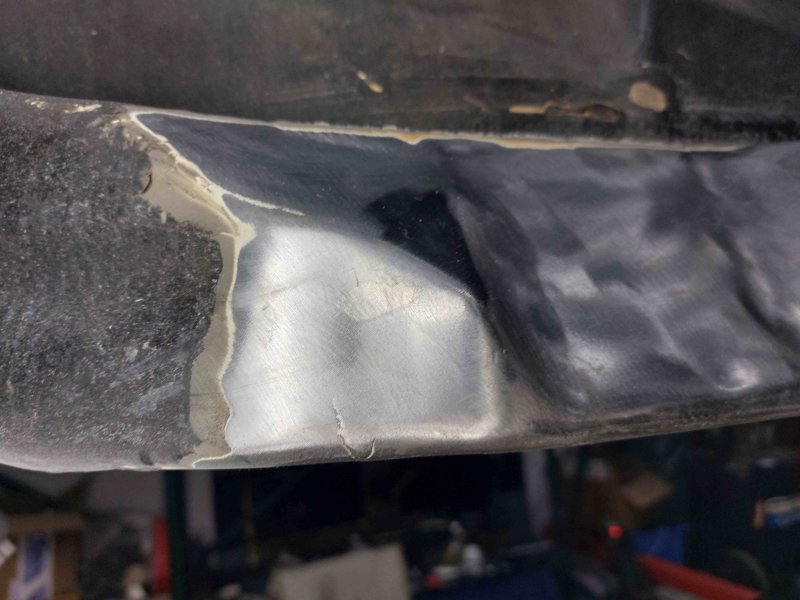 20240123_175612_compress82.jpg67.9 KB · Views: 26
20240123_175612_compress82.jpg67.9 KB · Views: 26 -
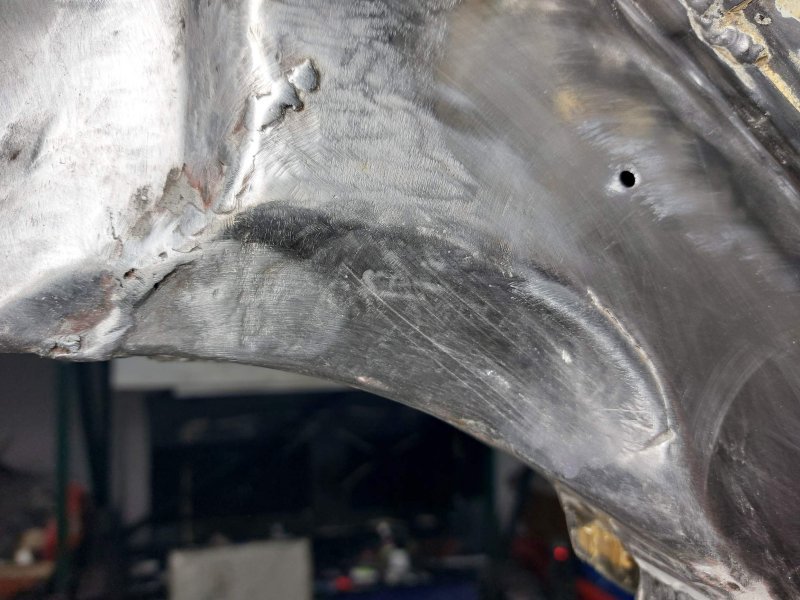 20240123_175706_compress49.jpg88.1 KB · Views: 24
20240123_175706_compress49.jpg88.1 KB · Views: 24 -
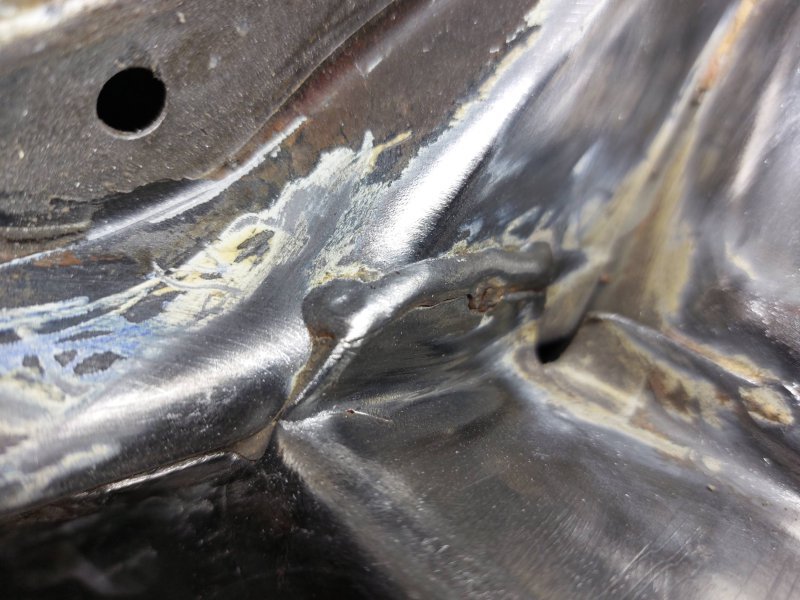 20240123_175800_compress14.jpg92.7 KB · Views: 21
20240123_175800_compress14.jpg92.7 KB · Views: 21 -
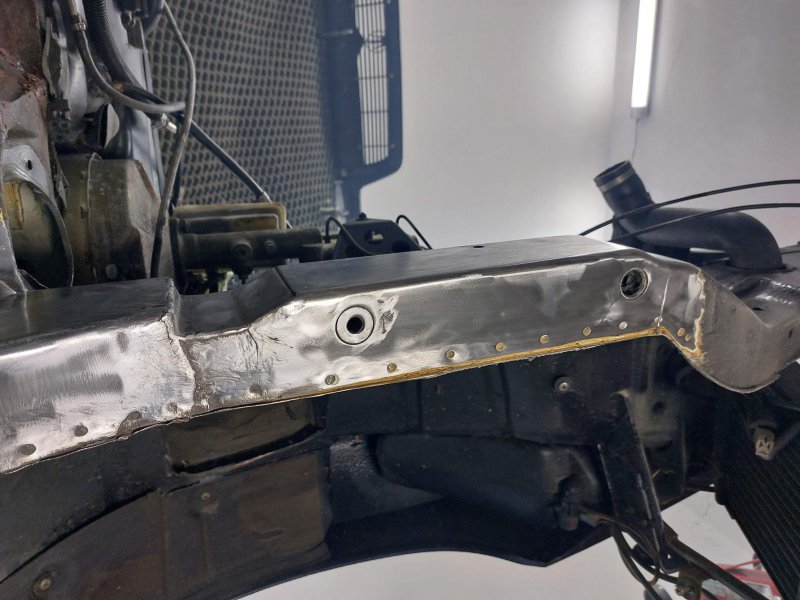 20240123_175836_compress21.jpg82.7 KB · Views: 21
20240123_175836_compress21.jpg82.7 KB · Views: 21 -
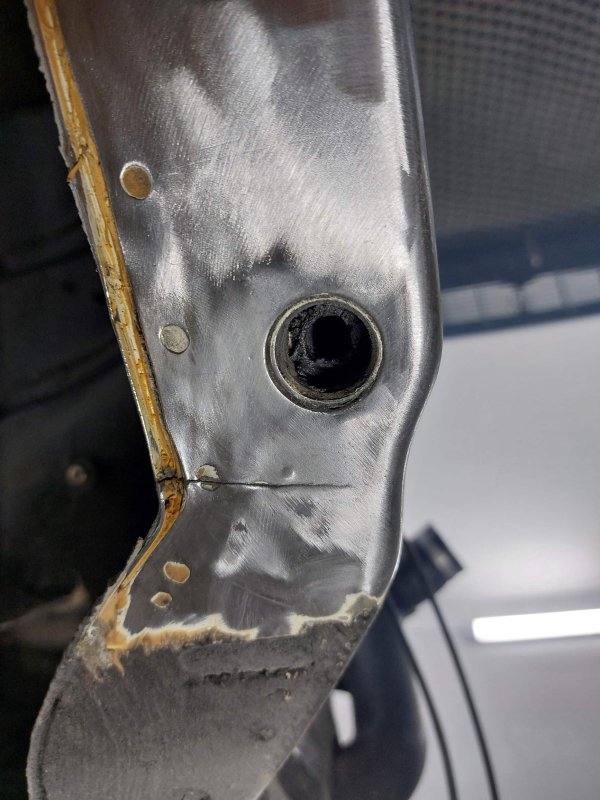 20240123_175849_compress21.jpg82 KB · Views: 22
20240123_175849_compress21.jpg82 KB · Views: 22 -
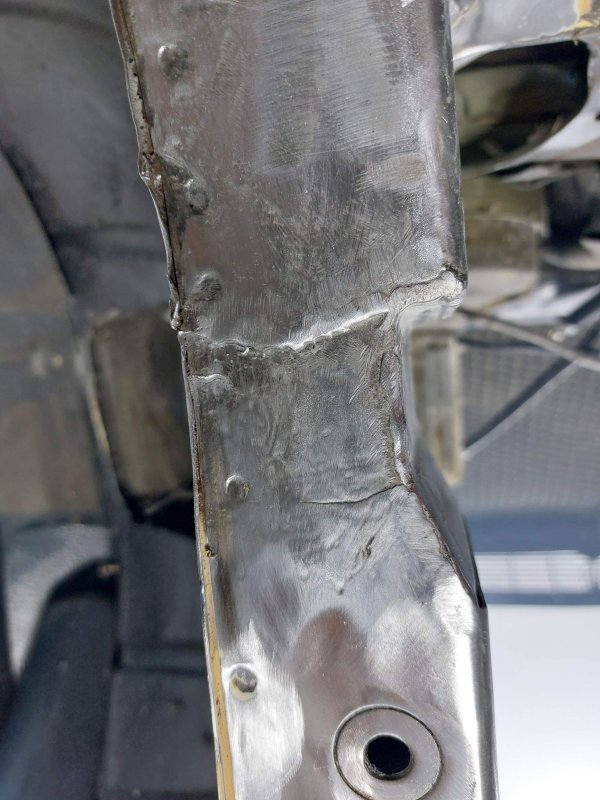 20240123_175855_compress27.jpg82.3 KB · Views: 21
20240123_175855_compress27.jpg82.3 KB · Views: 21 -
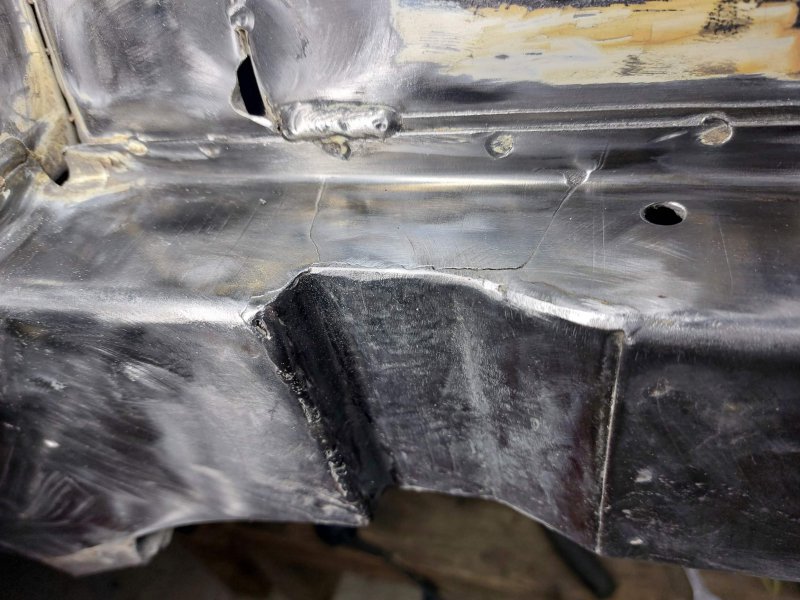 20240123_175945_compress85.jpg95.3 KB · Views: 20
20240123_175945_compress85.jpg95.3 KB · Views: 20
Last edited:



